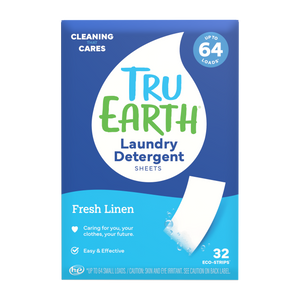It's no secret that feminine hygiene products are a necessary part of a woman's life. They serve the basic need of personal hygiene and comfort on a monthly basis. However, have you ever stopped to think about the negative impact these disposable products have on the environment?
As we become more aware of the environmental crisis we face, it's important to consider the impact our everyday choices, like the type of feminine hygiene products we use, have on the planet.
In this article, we'll explore the various environmental impacts of disposable feminine hygiene products and discuss more sustainable alternatives.

What Are Disposable Feminine Hygiene Products?
Disposable feminine hygiene products are personal care items designed for use during a woman's menstrual cycle. These items are meant to absorb menstrual flow and keep the user feeling clean and comfortable throughout the day.
The most commonly used disposable feminine hygiene products include sanitary pads, tampons, and panty liners.
These products come in a variety of sizes, shapes, and absorbances to suit the needs of every woman. It's important to note that disposable feminine hygiene products should be changed regularly, every 4-6 hours or as needed, to prevent the risk of infections or discomfort.
The Hard Truth About Feminine Hygiene Products
When it comes to menstrual products, the unfortunate truth is that many menstruators around the world do not have the privilege of choice. This may be due to economic limitations or need for access to products. However, cultural context also plays a role in menstrual product usage patterns. In certain environments, the use of internal menstrual hygiene materials like tampons can be considered culturally inappropriate.
For those who are fortunate enough to have access to different menstrual products, there are a multitude of factors that come into play when making a decision. These can include personal preference, comfort, affordability, sustainability, and more. Research shows that the disposable menstrual pad is the most commonly used product worldwide.
It's important to note that menstrual product usage is a pertinent issue that affects menstruators worldwide. Lack of access to such products can lead to missed school or work days, and health risks from unhygienic practices. Therefore, it's crucial to continue raising awareness and supporting initiatives that aim to provide better access to menstrual products for all.
What Are the Impacts?
According to estimates, plastic-based disposable pads can take about 500 to 800 years to break down in landfills, while plastic never truly biodegrades. Tampons also contain plastic within the core; some come with plastic applicators, adding to the problem.
In addition, the production process for these products utilizes vast amounts of water, energy, and other resources. It's said that the average lifetime use of disposable pads for one person generates more than 28,000 pounds of waste.
The impact of period products on our oceans and marine biology is a growing concern in today’s world. It is estimated that over 20 billion pads and tampons are being dumped into landfills every year, and these disposable products have the potential to take hundreds of years to decompose.

During the decomposition process, these products release microplastics that pollute the oceans and marine environments. These tiny particles of plastic can alter the natural ecosystems and pose a significant threat to marine life. Moreover, flushing menstrual products directly into the toilet can exacerbate the problem, as they end up in drainage systems that ultimately discharge into the sea.
On top of this, a study conducted by the Marine Conservation Society has found that single-use menstrual products and their packaging are among the most frequently discarded items on beaches and in the ocean. This alarming discovery highlights the urgent need for menstrual product manufacturers to adopt more sustainable and environmentally friendly practices.
Due to the composition of these products, they cannot be recycled, and their disposal often involves incineration that releases harmful substances into the air. As such, environmentally friendly alternatives such as reusable pads and menstrual cups are becoming more popular!
The Benefits of Reusable Feminine Hygiene Products
As the conversation around sustainability and environmental impact continues to grow, more and more people are looking for ways to reduce their carbon footprint in all areas of their lives, including their menstrual care.
Organic cotton-only pads and tampons have emerged as a popular option for those who want a more eco-friendly alternative to traditional menstrual products. These products are made with only organic cotton, a natural material that biodegrades much more quickly than synthetic fibers, thereby reducing the amount of waste that ends up in landfills.
However, it is important to note that cotton crops require massive amounts of water and pesticides to grow, contributing to other environmental issues such as soil degradation and groundwater contamination.

This is where reusable menstrual products come into play. From reusable pads and period underwear to menstrual cups, these products offer a long-lasting and sustainable solution for period care. By investing in quality reusable options, individuals can significantly decrease their waste while also saving money in the long run.
It is important to consider all aspects of producing and disposing of menstrual products when making sustainable choices.

